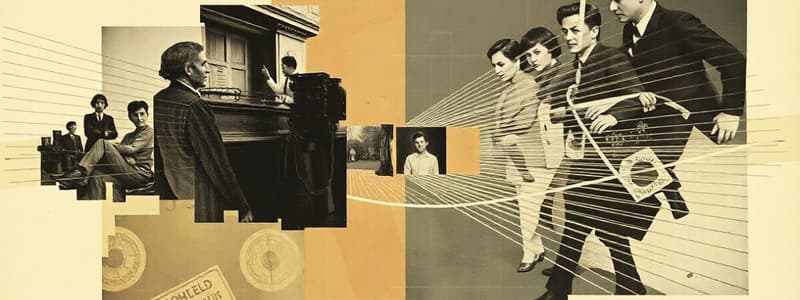Podcast
Questions and Answers
What does the term 'frequency' refer to in simple harmonic motion?
What does the term 'frequency' refer to in simple harmonic motion?
- The period of oscillation
- The amplitude of oscillation
- The number of oscillations completed per unit time (correct)
- The net force acting on the body
In simple harmonic motion, the net force acting on a mass at its equilibrium position is non-zero.
In simple harmonic motion, the net force acting on a mass at its equilibrium position is non-zero.
False (B)
What is the symbol used to denote frequency in simple harmonic motion?
What is the symbol used to denote frequency in simple harmonic motion?
f or n
The body at equilibrium position experiences a net force of _____ .
The body at equilibrium position experiences a net force of _____ .
Match the following terms related to simple harmonic motion:
Match the following terms related to simple harmonic motion:
What does the letter 'f' represent in simple harmonic motion?
What does the letter 'f' represent in simple harmonic motion?
The net force on the mass in an equilibrium position is zero.
The net force on the mass in an equilibrium position is zero.
What is the primary purpose of a spring in linear simple harmonic motion?
What is the primary purpose of a spring in linear simple harmonic motion?
In simple harmonic motion, displacement from the equilibrium position is denoted by the variable _____ .
In simple harmonic motion, displacement from the equilibrium position is denoted by the variable _____ .
Match the following terms with their definitions:
Match the following terms with their definitions:
Flashcards
Frequency in SHM
Frequency in SHM
The number of oscillations completed per unit time.
Equilibrium position
Equilibrium position
The position where the net force on a body is zero.
Simple Harmonic Motion (SHM)
Simple Harmonic Motion (SHM)
A type of periodic motion where the restoring force is directly proportional to the displacement from the equilibrium position.
Oscillation
Oscillation
Signup and view all the flashcards
Restoring force
Restoring force
Signup and view all the flashcards
What is linear SHM?
What is linear SHM?
Signup and view all the flashcards
What is the relationship between displacement and force in SHM?
What is the relationship between displacement and force in SHM?
Signup and view all the flashcards
Spring Constant
Spring Constant
Signup and view all the flashcards
How does the spring constant affect frequency?
How does the spring constant affect frequency?
Signup and view all the flashcards




